Featured Articles
Mayweather Is 49-0, Won’t Go, and We Still Don’t Know!
He’s the pound-for-pound boxing champ and beat Andre Berto Saturday, to notch the 49th consecutive win of his stellar career without a single loss.
No, Floyd Mayweather 49-0 (26) won’t retire for good and you can bet the mortgage that he’ll fight at least once more before he hangs the gloves up for good.
And lastly, despite him being undefeated, it’s still up for debate pertaining where he ranks among the greatest pound-for-pound fighters/boxers in history.
With Mayweather hitting the majestic 49-0 at 38 years old, I’ve seen enough and have all the needed data to assess his rank among the greatest fighters in boxing history……and here’s why. Floyd has been fighting as a pro for 19 years and his body of work through those years is pretty much complete. Let’s face it, Floyd won. Regardless of what happens from this point forward, if he were to lose, being that he’s five months shy of turning 39 it couldn’t be held against him. So you might as well view Mayweather as being undefeated even if he were to lose fight number 50. Nothing could happen now that could tarnish his legacy – actually it can only be enhanced.
Think about it, Mayweather has defeated the system. For a majority of his career he’s judiciously picked his opponents and fought every one of them at the perfect time when it worked to his advantage. With the exception of Miguel Cotto, every other outstanding or possible HOF opponent Floyd fought was either on the way up or out, or smaller than him (such as Marquez and Pacquiao). Couple that with his immense skill set, he had the advantage every time out.
Cotto is the only certifiable HOFer or great fighter who he fought and beat that was relatively close to his prime and achieved monumental accomplishments after fighting Mayweather. And even at that, Mayweather fought Miguel after he was thrashed by the allegedly loaded gloves of Antonio Margarito and the blazing rock hands of Manny Pacquiao on the best night of his career. If Floyd lost to Keith Thurman or Gennady Golovkin at age 39, it wouldn’t and shouldn’t be held against him.
Suppose Mayweather fights Thurman in fight number 50 and he lost? It’s not like his detractors could say a-ha, he wasn’t all that because he lost and is no longer undefeated. Regardless of what might happen in a future fight, Mayweather has to be judged as an undefeated fighter, which was his goal all along. Yes, I believe there are reasons that the record is manufactured, but, he is still undefeated….
I say, the data is in and you can now rank Floyd accordingly. He’s bulletproof against a future defeat.
The title of this article cites three things, Mayweather’s record, the fact that he will fight again despite retiring this past Saturday night after beating Andre Berto, and lastly, where does he ranks historically.
Let me address Floyd’s retirement. It’s a red herring. Mayweather will fight again because 50-0 is much easier to remember and cite than 49-0. Think about some of sports’ most revered numbers. Joe Dimaggio’s 56-game hit streak, Secretariat’s still-record time of 2:24 at the 1973 Belmont, the 1972 Miami Dolphins going 17-0, culminating with a win in Super Bowl VII, Wilt Chamberlain scoring 100 points in an NBA game, Sugar Ray Robinson going 128-1-2 before losing to Randy Turpin, Archie Moore’s record 141 knockouts and Rocky Marciano retiring for good at 49-0. You better believe Mayweather wants his own number and will not share the 49-0 mark with Marciano for more than eight or nine months. If you believe nothing else that’s been said in this space regarding Floyd Mayweather, you can take it to the bank that “Money” is going to fight once more before hanging his gloves up for good.
In regards to where Mayweather ranks historically, that’s very subjective especially when it comes to ranking fighters, make that tenfold regarding Floyd. He has a lot of impressive names on his record like Genaro Hernandez, Diego Corrales, Jesus Chavez, Jose Luis Castillo, Arturo Gatti, Zab Judah, Oscar De La Hoya, Juan Manuel Marquez, Shane Mosley, Miguel Cotto, Saul Alvarez and Manny Pacquiao. Yes, the names look impressive, but of the lot perhaps four were truly great fighters, Marquez, Mosley, Cotto and Pacquiao. Marquez was an overfed old featherweight, Mosley and Pacquiao were on their way out and only Cotto was a live fighter when Floyd fought the four of them. Based on Mayweather’s record as a welterweight, the weight in which he fought the biggest name opponents of his career, I’m not blown away at all. In those four bouts he scored one knockdown against Marquez, the smallest fighter of the group. Mosley, who was on a severe decline, almost put him in press row with one punch, Cotto pushed him real good and Pacquiao had a torn rotator cuff when they fought.
As terrific as Mayweather is/was fundamentally and defensively, I don’t see one bit of evidence to convince me that he could’ve bettered Sugar Ray Robinson, Kid Gavilan, Emile Griffith, Luis Rodriguez, Sugar Ray Leonard, Thomas Hearns or Roberto Duran fighting as welterweights. I don’t care that he’s undefeated, if every great just mentioned fought every opponent that Mayweather did the night Floyd fought them, they’d retire 49-0 too. Just like if Muhammad Ali or George Foreman fought all 49 of Marciano’s opponents the night Rocky fought them, Muhammad and George would’ve retired 49-0 also.
So in closing, if you’re going to rank Mayweather, the data (49-0) is in and a loss at age 39 can’t count against him. Yes, he will fight again and perhaps enhance his legacy if he beat Golovkin in a non-catch weight bout. And as far as ranking him, I’m comfortable saying 49-0 and we still don’t know for certain how truly great he was….
Yes, he was a great fighter/boxer, but not nearly one of the greatest of the greats and “TBE” should be the moniker for the best evader rather than the best ever!
Frank Lotierzo can be contacted at GlovedFist@Gmail.com
Photo Credit: Idris Erba/Mayweather Promotions
-
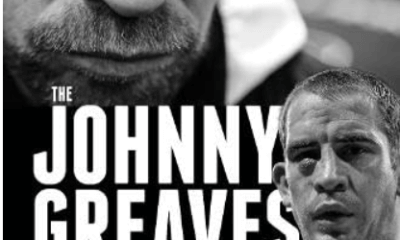
 Featured Articles3 weeks ago
Featured Articles3 weeks agoThomas Hauser’s Literary Notes: Johnny Greaves Tells a Sad Tale
-
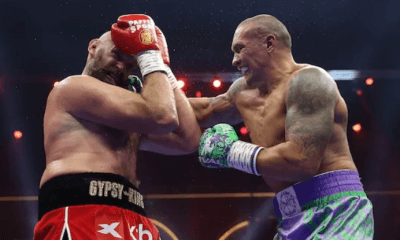
 Featured Articles2 weeks ago
Featured Articles2 weeks agoBoxing Notes and Nuggets from Thomas Hauser
-
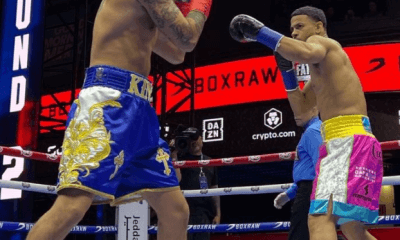
 Featured Articles4 weeks ago
Featured Articles4 weeks agoRolly Romero Upsets Ryan Garcia in the Finale of a Times Square Tripleheader
-
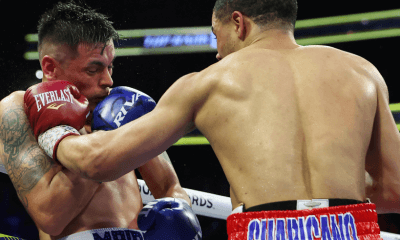
 Featured Articles4 weeks ago
Featured Articles4 weeks agoUndercard Results and Recaps from the Inoue-Cardenas Show in Las Vegas
-
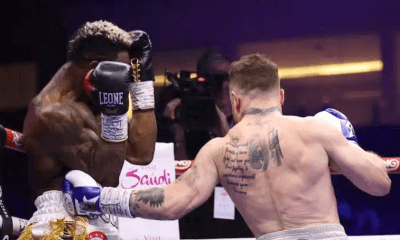
 Featured Articles4 weeks ago
Featured Articles4 weeks agoCanelo Alvarez Upends Dancing Machine William Scull in Saudi Arabia
-
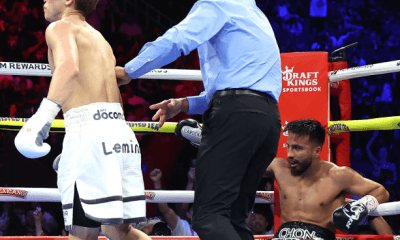
 Featured Articles4 weeks ago
Featured Articles4 weeks agoBombs Away in Las Vegas where Inoue and Espinoza Scored Smashing Triumphs
-
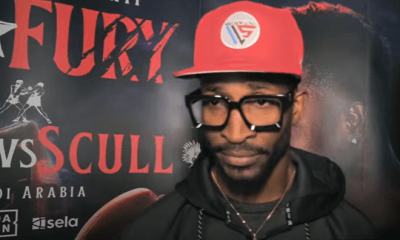
 Featured Articles4 weeks ago
Featured Articles4 weeks agoArne’s Almanac: The Good, the Bad, and the (Mostly) Ugly; a Weekend Boxing Recap and More
-
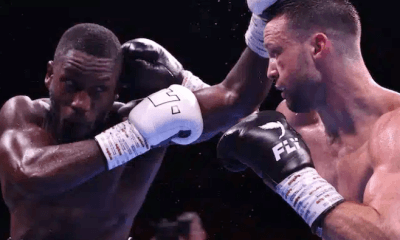
 Featured Articles1 week ago
Featured Articles1 week agoEkow Essuman Upsets Josh Taylor and Moses Itauma Blasts Out Mike Balogun in Glasgow



















